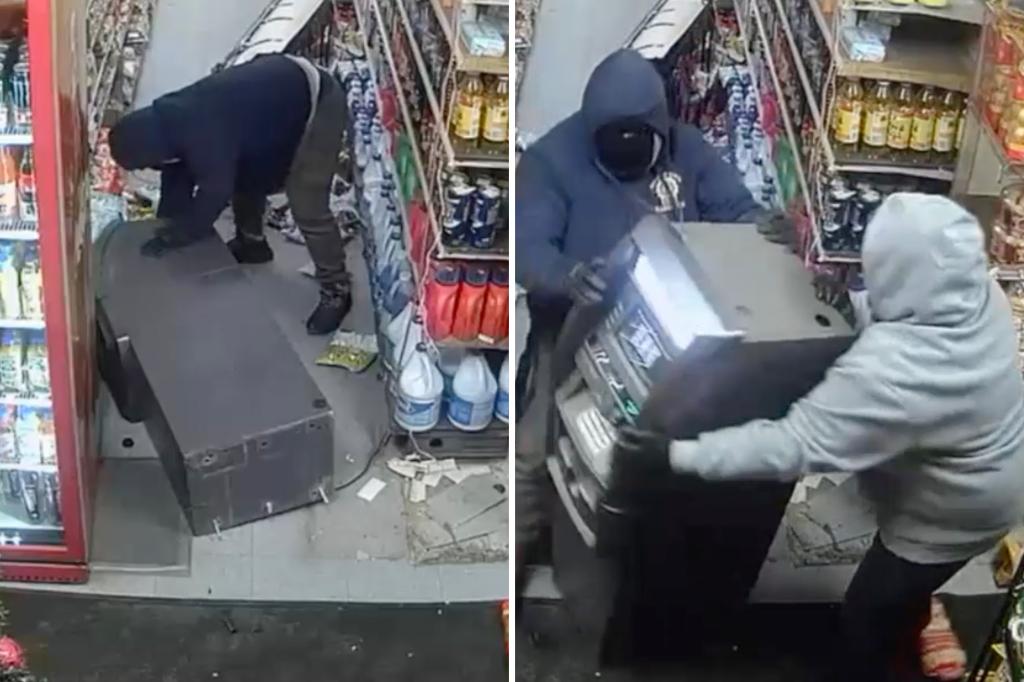Over a three-month period, stretching from September 19 to December 26, a brazen robbery crew executed a sophisticated series of heists targeting 49 storefronts across four boroughs of New York City: Manhattan, the Bronx, Brooklyn, and Queens. Their modus operandi involved stealing vehicles, which they subsequently used as getaway cars after raiding the targeted businesses. The primary objective of these robberies was to pilfer automated teller machines (ATMs), netting them tens of thousands of dollars. In addition to the ATMs, the thieves also made off with other merchandise from inside the stores. This citywide crime spree has left law enforcement scrambling to apprehend the culprits and bring an end to their lucrative illegal enterprise.
The meticulously planned operations of this trio of perpetrators began with the theft of vehicles, which were strategically selected to facilitate their escape after each robbery. Once inside the targeted storefronts, they quickly located and removed the ATMs, along with any other valuable goods they could seize. The stolen vehicles provided a crucial element of their strategy, allowing them to vanish swiftly into the urban landscape before law enforcement could respond. The repetitive nature of their crimes and their ability to evade capture for an extended period highlights the significant challenge they pose to law enforcement. The widespread geographical distribution of the targeted businesses further complicates the investigation, indicating a level of planning and coordination that suggests a well-organized criminal operation.
In two specific incidents during September, the robbers managed to extract nearly $40,000 in cash from the stolen ATMs. While police have confirmed the substantial financial gains amassed by the perpetrators throughout their spree, they have been unable to provide a precise total amount stolen from all 49 locations. This difficulty likely stems from the complex nature of the investigation, which spans multiple jurisdictions and requires the consolidation of information from numerous sources. The ongoing nature of the investigation also contributes to the lack of a definitive financial tally, as law enforcement continues to piece together the full extent of the crew’s criminal activities.
More recently, on December 23, surveillance footage captured two members of the crew in action. At approximately 1:20 a.m., they were recorded inside a grocery store located at 75-10 31st Avenue in Jackson Heights, Queens. The video clearly shows them meticulously disconnecting the wires from an ATM, a crucial step in their process of removing the machines from the premises. This surveillance footage provides valuable evidence for investigators, offering crucial insights into the methods employed by the robbers. The release of this footage to the public is a strategic move by the NYPD, designed to solicit tips and information that could lead to the identification and apprehension of the suspects.
The New York City Police Department (NYPD) has launched a public appeal for information regarding the three individuals involved in this extensive robbery pattern. Despite intensive investigative efforts, no arrests have been made to date. Recognizing the importance of public cooperation in solving this case, the NYPD is encouraging anyone with information, no matter how seemingly insignificant, to come forward. They have provided multiple channels for citizens to share information, including the NYPD’s Crime Stoppers Hotline, which offers anonymity to tipsters.
To facilitate the flow of information from the public, the NYPD has provided various contact methods. Individuals can call the NYPD’s Crime Stoppers Hotline at 1-800-577-TIPS (8477) or, for Spanish speakers, 1-888-57-PISTA (74782). Alternatively, tips can be submitted online through the Crime Stoppers website at https://crimestoppers.nypdonline.org/ or via social media by contacting @NYPDTips on X (formerly Twitter). The NYPD’s commitment to utilizing multiple communication platforms reflects their determination to engage the community in their efforts to bring these perpetrators to justice. The emphasis on anonymity underscores their desire to create a safe and accessible environment for individuals to share information without fear of reprisal.

